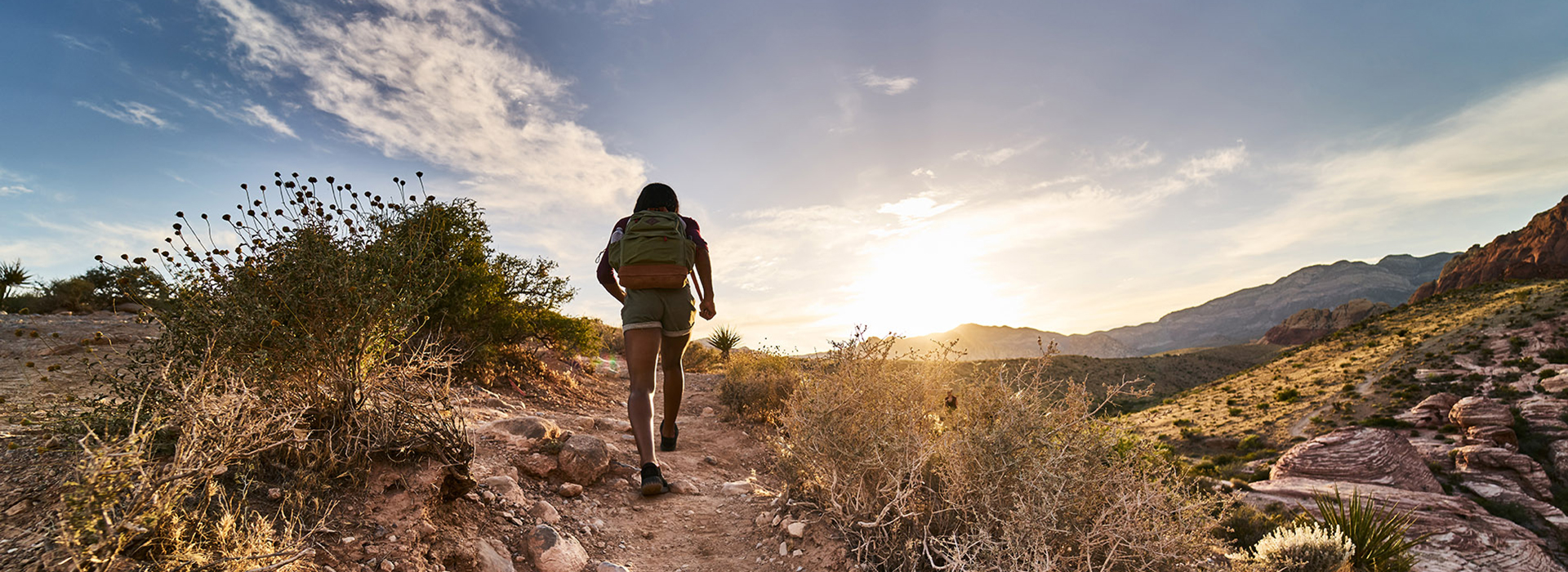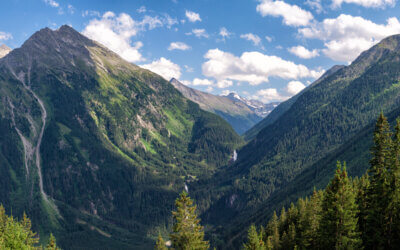Hiking has been a part of Americans’ lives for generations. Whether discovering untouched land or simply for recreation, this outdoor sport is a part of our history.
Today, hiking ranges from simple urban trails that meander throughout a city to backcountry trails that require a vast understanding of hiking, rock climbing, and navigating to massive elevation changes rewarded by panoramic views. Whatever your preference is, there’s no shortage of great places to hike in the U.S.
Below, we outline some of the best hikes in the U.S. and discuss how climate change has impacted the sport. We’ll also discuss how you can limit the environmental impact your next hike will have.
What State Has the Best Hiking?
As the third largest state in the USA, California is unsurprisingly home to some of the best hikes in the U.S. With its vast coverage on the west coast, California is home to all types of hiking environments, including the highest point you can hike in the contiguous U.S., Mount Whitney, to the lowest hiking point in North America, Badwater Basin.
There’s also city hiking in large metropolises, like Los Angeles, to super-remote bluffs and forests. It’s all available in California.
Let’s look at a two of the best hikes in California:
- Potato Chip Rock via Mount Woodson Trail: This 7.4-mile out-and-back hiking trail near Poway, California, is a moderately challenging hike that takes about 4.5 hours to finish. You will experience an elevation rise of just over 2,100 feet and can expect to encounter steep and narrow trails in some parts for an added challenge. The Potato Chip Rock formation also provides an excellent photo opportunity at the summit. Make sure to bring plenty of water and sunscreen, as this is a relatively exposed trail, with plenty of sunlight.
- Upper Yosemite Falls Trail: Looking for something more challenging? Look no further than the Upper Yosemite Falls Trail in Yosemite National Park. This is a 7.6-mile out-and-back trail near Yosemite Valley, California, that takes just over 5.5 hours to complete and will challenge you with its 2,425-foot change in elevation. But it will reward you with amazing photo opportunities of waterfalls and stunning views. There’s also camping for those looking to make this a multi-day trip. Keep in mind dogs are not permitted on this challenging and rocky hiking trail.
Where Are the Best Hiking Trails in the U.S.?
The U.S. is covered with great hiking spots from the Atlantic to the Pacific Ocean, so you’re sure to find enjoyable trails anywhere you go. But if you’re looking for one noteworthy hiking region, you can’t go wrong with the West Coast.
We already mentioned California as the state with the best hikes in the U.S., but it’s closely followed by neighboring states like Washington and Arizona. And if you’re up for a quick flight, you can reach Hawaii with relative ease from the West Coast, which also has amazing hiking trails through its volcanic mountains.
What City Has the Most Hiking Trails?
Arizona forces you to deal with brutal summer heat, but it’s also home to amazing hikes. In fact, Phoenix is the city with the most hiking trails in America. You’ll find incredible hiking routes in Phoenix, Arizona, such as South Mountain Park and Preserve and the Echo Canyon Trailhead.
Phoenix offers hiking for all experience levels too, ranging from the simple 1-mile loop trail at the aforementioned South Mountain Park to the more challenging Piestewa Peak in the Phoenix Mountains Preserve with its 1,200-foot elevation gain and some of the best views in the U.S.
What’s more, if you want to explore further, you can make the less-than-two-hour drive to Tucson, Arizona, and take in its countless hiking trails. Tucson’s trails range from the 11-mile urban hike at Rillito River Park Trail to the more remote Gould Mine Loop in Saguaro National Park West that ends in a pool to cool off after an afternoon in the hot Arizona sun.
What Is the Best Location for Hiking?
While it’s great to hit a particular state or city and explore the hiking there for a week or longer, sometimes you want to experience multiple trails in a day hike or just a few days. This is where finding a great hiking location can help. These locations are often some of the country’s amazing national and state parks.
Let’s look at some of these beautiful hiking locations sprinkled throughout the U.S. where you can spend a day or a few days hiking multiple trails:
- Glacier National Park: This national park is right on the border of Montana and Canada, and many refer to it as the “Crown of the Continent” because of its natural beauty. With over 1 million acres of wilderness, there is no shortage of places to hike here. In fact, Glacier National Park is home to over 700 miles of hiking trails, including some that are wheelchair accessible.
- Yosemite National Park: Yosemite National Park has over 750,000 acres of wilderness and 800 miles of hiking trails, making it another top one-stop location for the best hikes in the U.S. Whether you want a challenge, such as the Half Dome Trail, or something similar, Yosemite has it. Plus, you can enjoy a wide range of spectacular views, from amazing rock formations to seas of beautiful wildflowers.
- Yellowstone National Park: Yellowstone houses over 2.2 million acres of space that includes countless species of wildlife, plant life, natural wonders like Old Faithful and Mammoth Hot Springs, and spectacular vistas. This alone puts it on many people’s bucket lists, but it also boasts more than 1,000 miles of trails for your enjoyment. It also has 15 miles of boardwalk for those looking for a more leisurely stroll than an intense hike.
- Zion National Park: Located in Utah, Zion National Park has many attractions, including Kolob Canyons and the Zion Wilderness. The Zion Wilderness takes some planning because only small groups are allowed to visit at a time, but the Zion Canyon is easy to get to via shuttle service and has multiple nearby trailheads, including the Narrows, which are notoriously challenging.
What Climate Is Good for Hiking?
Climate plays a big role in your hiking pleasure. Yes, some more adventure-seeking hikers may enjoy the thrill of encountering tough conditions, but most hikers just want to be comfortable. The best climate for hiking is warm and breezy. This way you’re warm enough, but the cool breeze can help lower your temperature if you start exerting yourself.
A good secondary climate is cold but sunny. However, in this climate, you’ll want to layer your clothing so you can easily add and remove layers to remain comfortable as the temperature and amount of sun change throughout the day.
The ideal hiking temperature is around 55 degrees Fahrenheit.
At What Temperature Should You Not Hike?
While hikers prefer many different temperatures and tend to hike year-round, it’s typically not a good idea to hike at 90 degrees Fahrenheit or higher. At this point, you risk dehydration and other potentially harmful issues. If it is a relatively easy hike, you may be OK to continue; just make sure to wear sunscreen and bring plenty of water to drink.
How Does Climate Change Affect Hiking?
Climate change affects virtually everybody, including avid hikers. Extreme climate shifts have resulted in widespread wildfires that have forced world-renowned trails, such as the Pacific Crest Trail, to close sections.
Plus, ongoing droughts caused by climate change leave hikers without reliable water sources along the trails. On the flip side, extreme weather can also lead to massive flooding in some areas, closing down and potentially damaging hiking trails.
On top of climate change impacting our ability to find the best hikes in the U.S., energy extraction on public lands, such as national parks, is impacting it too. Extracting fossil fuels and other energy from our national parks puts the fragile ecosystem at risk and limits recreational access. Not to mention that a quarter of all carbon emissions the U.S. produces comes from energy extraction on public lands.
Does Hiking Affect the Environment?
Yes, hiking can impact the environment, but there are ways to minimize your hiking trip’s effect. For example, crowded trails sometimes lead to hikers heading off the normal trail. While this may seem innocent, it can result in trampling vegetation and compacting soil, which causes increased water runoff and erosion.
Some hikers even remove protected vegetation, causing the same issues. Soil loss is the most significant and longest-lasting environmental impact.
The same impact occurs when horseback riding, mountain biking, and driving motorized vehicles on hiking trails.
To avoid this, stay on the intended trail and don’t veer off the path. If you find yourself off the trail, tread lightly and do all you can to minimize your impact on the soil and vegetation.
Also, avoid mountain biking or driving motorized vehicles in or around the hiking trails. If you use a vehicle to get to the trailhead, secure it in a designated parking or storage area and continue on foot.
Hiking can also involve trekking long distances to reach the best hikes in the U.S. This may mean a long car ride or even a flight, which increases your carbon footprint. You can offset this carbon by purchasing carbon removal, such as Terrapass’ EcoTourist Bundle.
Keep the Best Hikes in the U.S. Green With Carbon Removal
With the list of best hikes at your disposal, it’s now in your hands to keep that hike as green as possible by limiting your environmental impact. This starts with remaining on the path so as not to affect the local ecosystem and soil.
It continues by offsetting any carbon emissions you create getting to the hike. Check out TerraPass’ wide range of carbon removal products to keep your hike green.
Brought to you by terrapass.com
Featured image:











